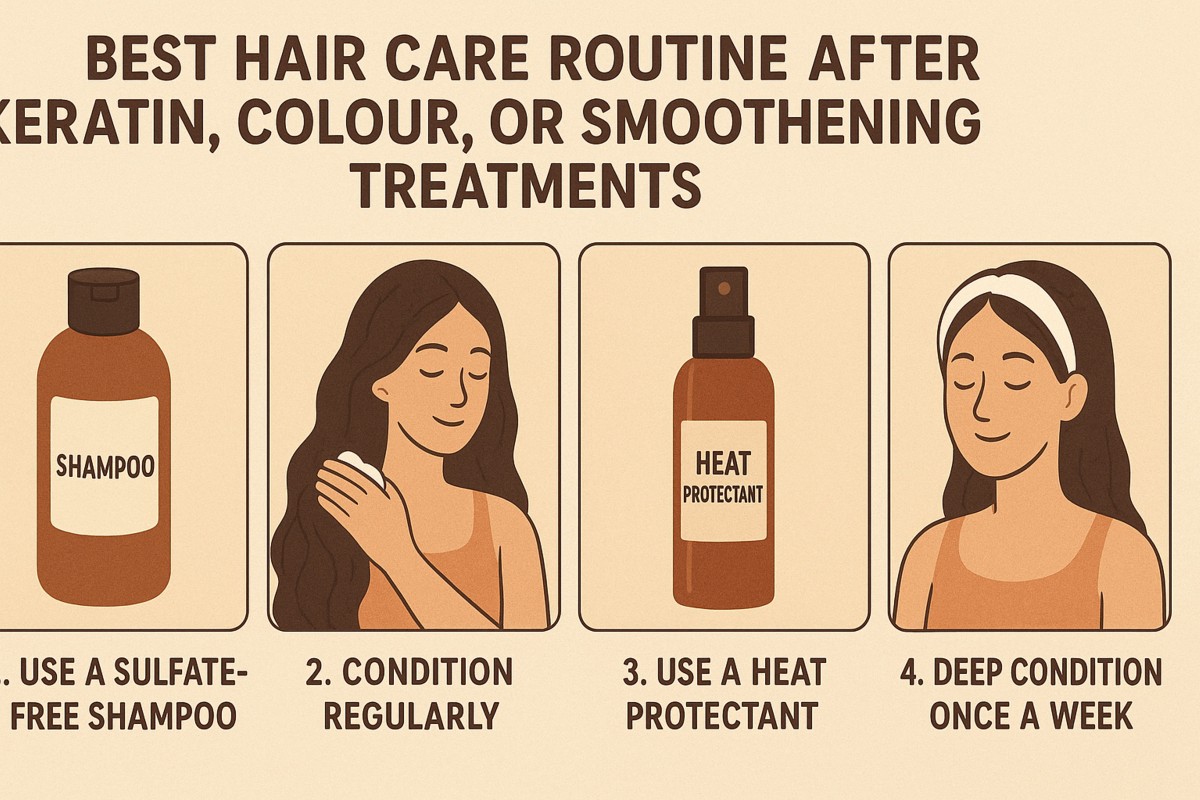The advancement of different hair treatments such as keratin, coloring, and smoothing can provide silky, lustrous, and easy-to-maintain hair by improving overall appearance. Such popular hair treatments can make flowing tresses more vulnerable and increase chances of getting damaged if they are not sustained through regular care. There are various post-hair-treatment routines that help to protect hair health and retain a polished look for a longer duration.
1. Avoid washing hair after getting hair treated
It is suggested that hair needs to settle in and soak up the product after every hair transformation service. Those who have taken keratin or smoothening treatment have to skip washing hair for almost 72 hours. People who have used different hair color treatments have to wait for 48 hours to strengthen the hair by bonding deeply with the protective outer coating. As shampooing the hair can affect the durability of the treatment.
2. Selecting sulfate-free shampoo for post-treatment
Daily-use shampoo tends to wash away hair’s natural moisture and dissolve hair color or keratin-infused coating. Choose products that contain argan oil for a glossy finish and to prevent dehydration, keratin protein to fortify hair fibers for a smooth and healthier texture, and coconut milk or aloe vera that enriches the scalp with essential oils by using moisturizing conditioner too.
For more information: Pilgrim Vs Wishcare
3. Stay away from heat-based styling for a longer period
Those who make use of straighteners, curling irons, and blow dryers can experience dry, brittle hair texture and split strands. Styling products should only be used with applying heat protection spray, during low or moderate temperatures, and with focusing on air drying and the cool air mode on the dryer.
4. Deep Conditioning: Non-Negotiable
Chemically processed hair experiences moisture loss quickly, which makes it rough or frizzy. Using deep conditioning masks that contain keratin, shea butter, avocado oil, or hyaluronic acid that restore silky touch, hydration, and greater hair flexibility. Covering hair with a warm towel after applying the mask helps to reintroduce nutrients.
5. Protecting hair during longer periods of sleep
Fiber friction against a non-silky pillowcase can cause dryness and broken strands, particularly after smoothening or coloring. It is suggested to sleep on a silk or satin pillowcase and secure hair loosely with soft scrunchies or wrap it around with a silk scarf. Prevent sleeping with wet hair, which leads to tangled hair.
6. Choosing the option of trim regularly
Post-treatment hair tends to develop brittle, weakened ends due to dryness. Trimming hair after every 6-8 weeks supports a glossy, healthy hair appearance and protects against hair fiber weakening. A small trim can help to retain bouncy movement and silky softness.
7. Avoid Sun and Chlorine Exposure
Harmful ultraviolet rays and chemically treated pool water can make the color wash out and dry out keratin-treated hair. Safeguarding hair by wearing a hat or scarf outdoors, applying UV protectant hair serum, using a swim cap, and washing hair immediately with clean water.
8. Minimize the Need for Touch-Ups
Keeping a time gap between sessions is essential, as multiple treatments can reduce hair’s structural integrity based on scalp health.
9. Consuming a healthy diet and drinking plenty of water for healthy hair
Eating food that contains protein, such as eggs, lentils, and nuts, and omega-3 fatty acids, which can be found in fish, flaxseeds, and walnuts, to keep hair nourished from within the scalp.
10. Regular Salon Maintenance
Making monthly appointments for hair spas or protein treatments to maintain a silky texture with minimal frizz. Such treatments consist of nourishing ingredients that retain the longevity of keratin or smoothen while keeping color vibrant.
Conclusion
Keratin, coloring, and smoothening treatments have become trendy hair care solutions for improving hair appearance but can also cause dryness and affect hair growth. Choose chemical-free shampoo with nourishing ingredients, avoid washing hair frequently, use conditioning masks, detangle hair with a wide-tooth comb, avoid heat-styling tools, do regular trims, and keep hair healthy internally to maintain the aftereffects of such hair treatments.
